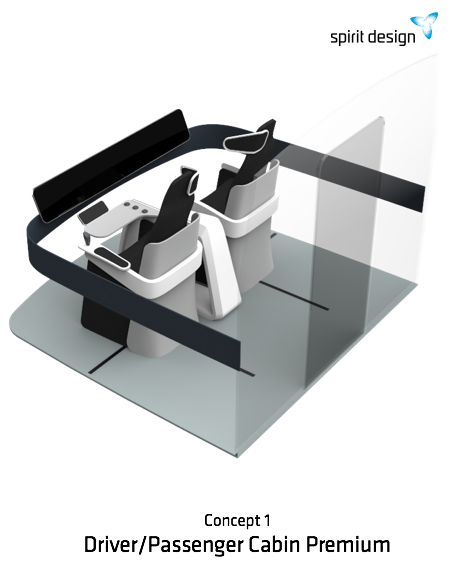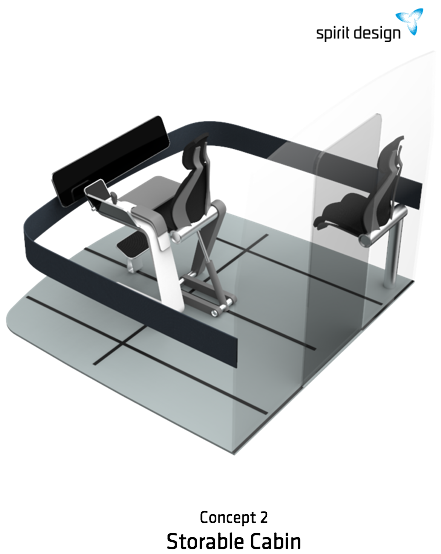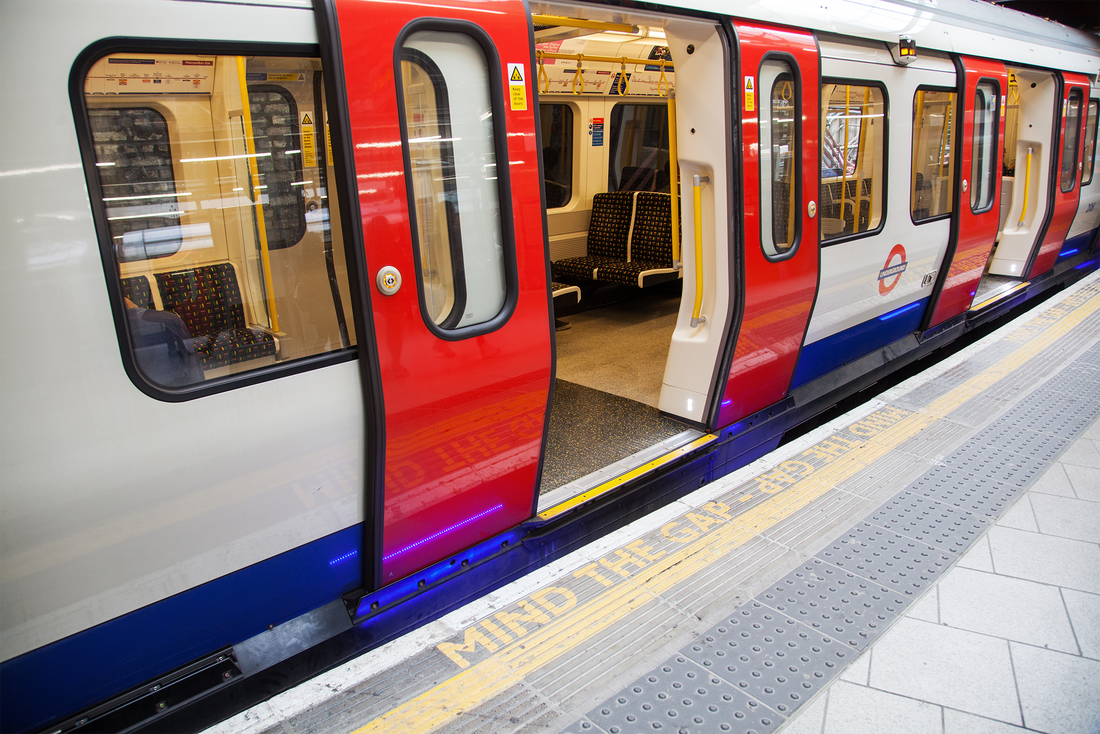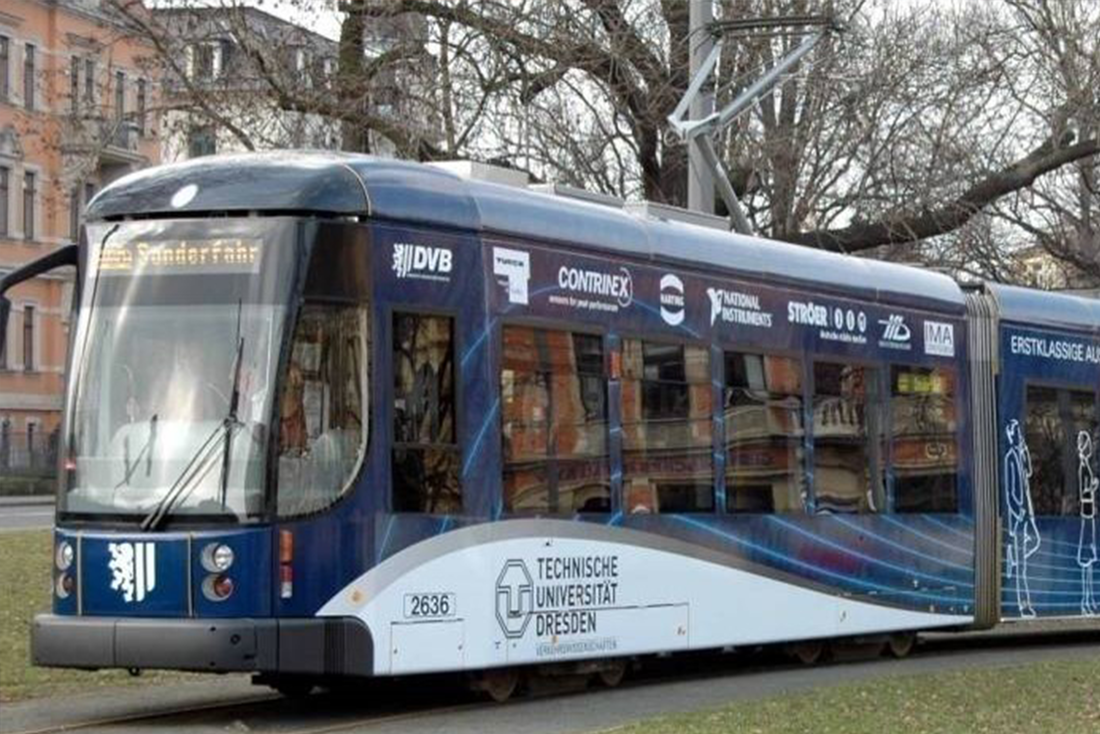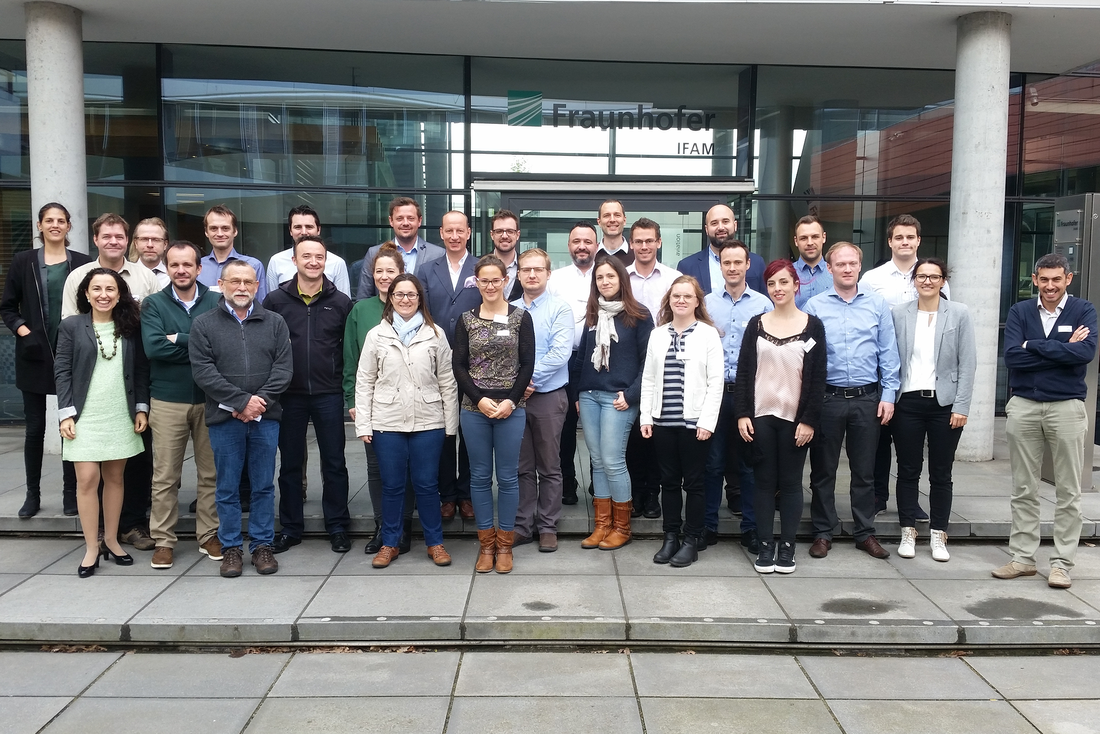The driver's desk of the future will be modular and flexible!
User-centred concept development for innovative solutions
User-centred concept development for innovative solutions
Traditionally, a train driver’s working place consists of a broad dashboard with screens, gauges, several controls and switches and foot pedals. From this position, the driver operates and controls the train. Due to the digitisation and automation in the field of rail mobility, the classic set-up of the driver’s desk will undergo enormous changes, offering new options for the train driver and passengers alike.
In order to meet the requirements for the driver e.g. ergonomics, comfort, functionality, usability, concentration, safety…, Spirit Design conducted interviews and observations on several train types with connoisseurs of the rail industry (Human-Machine-Interface (HMI) expert and train driver and operators of the Austrian federal railways), to fully understand the driving processes and associated activities in the cockpit while operating a train.
This was followed by an extensive research phase where developments in comparable mobility industries as well as future technological trends were analysed. Based on the user-centred interview and observation results, combined with the research, a multidisciplinary ideation session was held between Spirit Design and INDAT to develop innovative ideas on how to meet present and future demands. As a result, the ideas were combined and visualised to promising concepts by Spirit Design. The resulting concepts were subjected to a thorough technological analysis. In addition, feedback from the project partners was obtained to select concepts and to refine them in further steps. Consequently, two concepts (Driver/Passenger Cabin and Compact Storable Cabin) have been favoured.
The first concept “Driver/Passenger Cabin” is designed as a premium class room with two premium seats. The seats are mounted on floor rails which allow multiple positions (in drive direction, head to head, standing, seating and sleeping). They can either be used as a driver's seat and a jump seat for training purposes, or as premium passenger seats with great views. The ecological and economic value added by this concept is that existing premium seats - manufactured in higher quantities - can be used as a basis for the driver's seat and adapted to new needs in a modular way. It is a sustainable way of reducing resources at the stages of sourcing and production.
The second concept “Storable cabin” keeps the driver’s desk and the driver’s seat as simple and flexible as possible. All the Human-Machine-Interfaces and panels are mounted on the seat or on a highly flexible sideboard. The entire cabin can be stowed in a hinged compartment if required, leaving the room without any remaining component during the semi-autonomous stages. When the train will become totally autonomous, the compartment can be removed completely. As a result, a free space is created, which can be used in different scenarios ranging from conferences to leisure, gym, merchandising...
After the final decision on the concept is made, a virtual prototype will be developed collaboratively by Mat4Rail participants INDAT and Spirit Design.
In order to meet the requirements for the driver e.g. ergonomics, comfort, functionality, usability, concentration, safety…, Spirit Design conducted interviews and observations on several train types with connoisseurs of the rail industry (Human-Machine-Interface (HMI) expert and train driver and operators of the Austrian federal railways), to fully understand the driving processes and associated activities in the cockpit while operating a train.
This was followed by an extensive research phase where developments in comparable mobility industries as well as future technological trends were analysed. Based on the user-centred interview and observation results, combined with the research, a multidisciplinary ideation session was held between Spirit Design and INDAT to develop innovative ideas on how to meet present and future demands. As a result, the ideas were combined and visualised to promising concepts by Spirit Design. The resulting concepts were subjected to a thorough technological analysis. In addition, feedback from the project partners was obtained to select concepts and to refine them in further steps. Consequently, two concepts (Driver/Passenger Cabin and Compact Storable Cabin) have been favoured.
The first concept “Driver/Passenger Cabin” is designed as a premium class room with two premium seats. The seats are mounted on floor rails which allow multiple positions (in drive direction, head to head, standing, seating and sleeping). They can either be used as a driver's seat and a jump seat for training purposes, or as premium passenger seats with great views. The ecological and economic value added by this concept is that existing premium seats - manufactured in higher quantities - can be used as a basis for the driver's seat and adapted to new needs in a modular way. It is a sustainable way of reducing resources at the stages of sourcing and production.
The second concept “Storable cabin” keeps the driver’s desk and the driver’s seat as simple and flexible as possible. All the Human-Machine-Interfaces and panels are mounted on the seat or on a highly flexible sideboard. The entire cabin can be stowed in a hinged compartment if required, leaving the room without any remaining component during the semi-autonomous stages. When the train will become totally autonomous, the compartment can be removed completely. As a result, a free space is created, which can be used in different scenarios ranging from conferences to leisure, gym, merchandising...
After the final decision on the concept is made, a virtual prototype will be developed collaboratively by Mat4Rail participants INDAT and Spirit Design.
Read further articles
|
Further opportunities in railway structures through innovations in materials and processes Application to innovative door leaves |
Material-independent design loads for car-bodies A new algorithm for the generation of synthetic operational load sequences |
|



